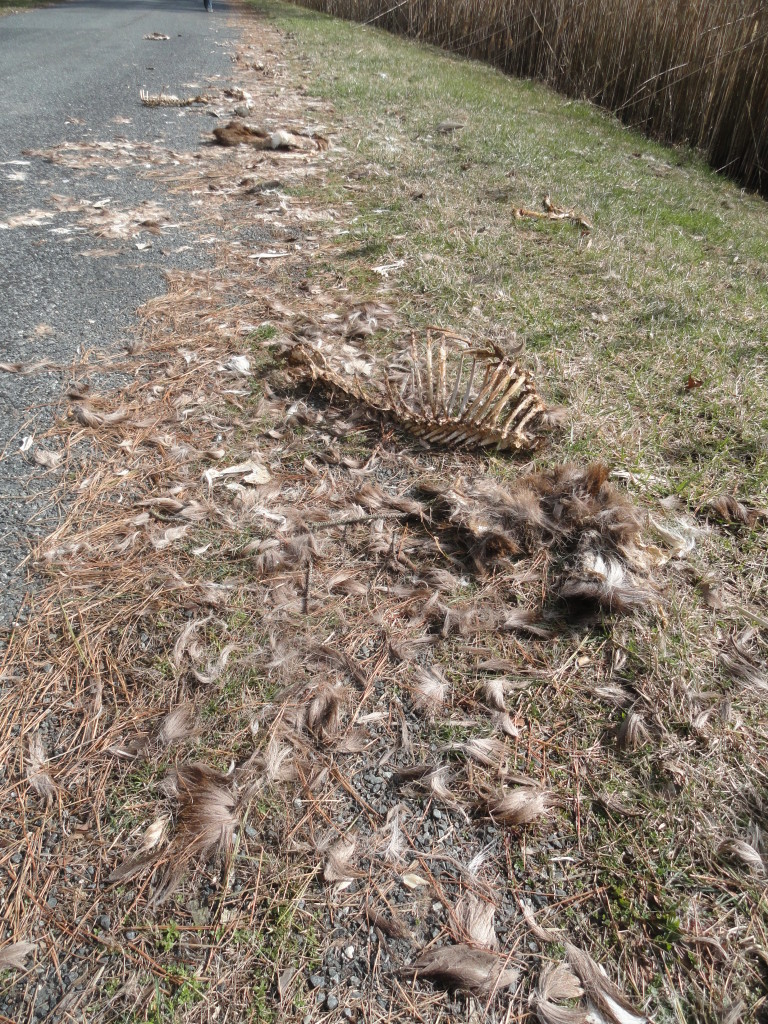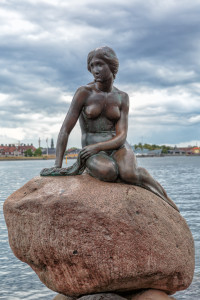By the time you read this I will be science traveling in Scandinavia. The trip will take us into three countries – Denmark, Sweden, and Norway. Somehow I missed these countries during my three years living and working in Brussels, Belgium, so I’m back to fill in the gaps.

After a quick plane change in Amsterdam, our first stop is Copenhagen, Denmark, home of the iconic harborside houses above. Long besieged by Vikings (at least historically), and despite having huge oil and gas reserves in the North Sea, Denmark is actually leading the way with renewable energy from wind turbines.

A few days of exploring Copenhagen and environs and then it’s time to hop a speed train through the Swedish countryside up to Stockholm, Sweden, where we will be obligated to hike up to the Little Mermaid statue. [Note added on 6/2/15: Yes, the Mermaid is still in Copenhagen, not Stockholm. Somehow I got the landmarks jumbled when I wrote this and scheduled it for future posting and I didn’t have access to fix it from the road. Thanks, Betsy, for catching the error.] Like Denmark, Sweden’s history has had a huge historical Viking influence.

Another train from Stockholm takes us to Oslo, which is the beginning and the end of our Norwegian experience. We’ll spend a couple of days checking out the environs that induced “The Scream,” Edvard Munch’s iconic painting – which are actually four paintings – and we should be able to see at least three of them. We’ll also see, you guessed it, more Viking influence. From Oslo we take a winding train/train/boat/bus/train across the Norwegian interior and through the fjords before reaching the city of Bergen on the western coast. A day later we’re back on the train to Oslo to catch the flight home (via Frankfurt, Germany).
During all of this I’ll have my laptop so that I can be writing up the experiences during the long flights and train rides. As is my usual pattern, I’ll be looking for sciencey stuff along the way (how did those fjords come to be, anyway?). Internet access will be sporadic but I’ll plan to post photos here and on Facebook whenever I get a chance.
Watch this space for more on Scandinavia.
David J. Kent has been a scientist for over thirty years, is an avid science traveler, and an independent Abraham Lincoln historian. He is the author of Tesla: The Wizard of Electricity and the e-book Nikola Tesla: Renewable Energy Ahead of Its Time. He is currently writing a book on Thomas Edison.
Follow me by subscribing by email on the home page. And feel free to “Like” my Facebook author’s page and connect on LinkedIn. Share with your friends using the buttons below.












 Current writing projects are headlined by my forthcoming book on
Current writing projects are headlined by my forthcoming book on 




 Here on Science Traveler the focus was on Abraham Lincoln, with several events commemorating his 2nd Inauguration and one of the finest speeches ever delivered.
Here on Science Traveler the focus was on Abraham Lincoln, with several events commemorating his 2nd Inauguration and one of the finest speeches ever delivered.  That wasn’t all Science Traveler was about. I also posted a photo retrospective of the
That wasn’t all Science Traveler was about. I also posted a photo retrospective of the  On Hot White Snow I took a look at how we’ve moved
On Hot White Snow I took a look at how we’ve moved  The Dake Page posted a series of climate change-related pieces since the last update.
The Dake Page posted a series of climate change-related pieces since the last update. 







 Not literally, of course, but as the guide informed us during our tour, Hemingway let dozens of feral cats roam his grounds freely. Many of them had six toes, a condition called polydactyly for you scientist-types out there. I recalled from my marine biology days that sailors thought polydactyl cats were good luck, or at the very least were better at catching rats. In any case, Hemingway was given a six toed cat by a ship’s captain and well, cats breed. There are currently 40-50 cats on the Hemingway property, which the guides regularly trot out for photo-ops.
Not literally, of course, but as the guide informed us during our tour, Hemingway let dozens of feral cats roam his grounds freely. Many of them had six toes, a condition called polydactyly for you scientist-types out there. I recalled from my marine biology days that sailors thought polydactyl cats were good luck, or at the very least were better at catching rats. In any case, Hemingway was given a six toed cat by a ship’s captain and well, cats breed. There are currently 40-50 cats on the Hemingway property, which the guides regularly trot out for photo-ops.










